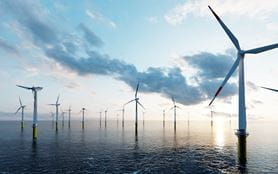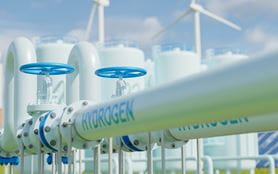Part 5: Conclusion and potential solutions
Related people




David Lee
Partner
London

Scott Neilson
Partner
Tokyo

Matthew Townsend
Partner, Global Co-Head Environment, Climate and Regulatory Law Group and the International Trade Group
London

Anna Masser
Partner
Frankfurt am Main

Ken Rivlin
Partner, Global Co-Head Environment, Climate and Regulatory Law Group and the International Trade Group
New York

Sally Dewar
CEO, A&O Consulting
London

Gauthier van Thuyne
Partner
Brussels

Kate Sumpter
Partner
London

Bob Penn
Partner
London

George Cannon
Partner
Washington, D.C.

Goran Galic
Partner
Perth
Headlines in this article
Related news and insights
Publications: 21 March 2024
Publications: 21 March 2024
Publications: 21 March 2024
Publications: 21 March 2024
What policy and support measures can help close the Net Zero financing gap? And what can different stakeholders do themselves to accelerate progress?
A multi-trillion-dollar gap remains between current climate finance flows and estimates of the sums needed to achieve Net Zero, and certain sectors will need policy and direct public support to achieve sufficient scale.
Technologies already at commercial scale – including onshore and offshore wind, solar, and EVs – may need policy interventions to overcome barriers such as permitting timelines, slow grid upgrades and the provision of additional transmission lines.
Policy support and government funding will be needed for key technologies
Alongside this, solutions such as floating offshore wind, next-generation nuclear infrastructure, CCUS, and technologies to abate emissions from air travel and heavy industry will need a wide range of public policy and direct government support to achieve sufficient scale.
Public policy is starting to address the need in some areas (see Part 3). However, the global response to date is insufficient and implementation is too slow. Potential structural changes such as carbon taxes and emissions trading schemes – which reflect the environmental damage caused by GHGs – are needed now, yet research from the IMF reveals that only 46 jurisdictions have either a carbon tax or ETS in place. While there are more in the pipeline, major economies including India, Russia, Australia and most U.S. states do not appear on the list.[1]
Macro shocks have capacity to blow progress off course
As we have seen over the past two years, war, inflation, supply chain disruptions and materials shortages act to delay the decarbonization process and make it more expensive. If, for instance, wind turbine manufacturers struggle to make money because of rising input costs, supply disruptions and permitting delays, ambition will be curtailed.[2]
These challenges raise the importance of maintaining a long-term perspective for both public and private actors, while recognizing that immediate action is needed.
With this in mind – and considering the opportunities and constraints discussed in this report – the potential solutions to close the financing gap are complex and multifaceted.
Firstly, stakeholders need to align. As discussed in Part 2 there are many potential pathways to Net Zero and it is not yet clear how much investment will be needed in different technologies to meet the Paris goals. However, most involve at least a 700% increase in climate finance by 2030 and further rapid scaling of technologies including solar, wind, and batteries.
The sheer size of the challenge means that Net Zero cannot be reached without the majority of businesses, investors, governments and development finance agencies working together. Policy must create the conditions to accelerate private investment in Net Zero through a combination of price support measures, targeted financial incentives, streamlined permitting regimes and international mechanisms to penalize high-carbon activities, among others.
Policy must incentivize long-term private investment
Every effort must be made to ensure policy catalyzes private capital flows in a way that transcends short-term political cycles. Laws and regulations must be calibrated to encourage clean energy investment without exposing companies, their boards and management to excessive risk, such as uncertain subsidies, permitting processes or liability regimes (as is the case with CCUS). In return, if governments have enabled it, businesses must commit to Net Zero publicly. By creating business strategies with these pathways in mind, companies can avoid investing in stranded assets and take advantage of future policy shifts.
Greater alignment among stakeholders can unlock private capital across the developed and developing world. While Net Zero initiatives are picking up, the goals can only be achieved if the majority of economic actors commit and deliver.
As an example, less than 16% of asset owners and insurers were committed to Net Zero as of mid-2022.[3] At the same time, 89% of Net Zero targets came from OECD countries, and substantial amounts of capital in non-OECD countries are not yet committed to Net Zero.
In Asia (excluding Japan and Australia), institutions committed to Net Zero only manage 4.3% of total AuM, although this trend may start to shift with the establishment of GFANZ regional networks in Asia-Pacific and Africa.[4] States themselves can play their part – those with sovereign wealth must craft long-term strategies to channel investment towards climate-positive solutions, and those with export credit agencies and other development financing institutions could align their missions with the Paris goals.
Second, policy and financial support will need to be directed towards critical decarbonization technologies that are not currently at commercial viability, including carbon capture, nuclear, green hydrogen, and industrial sectors such as steel and cement. To deliver Net Zero these technologies and sectors will need to go from near-zero investment in actual projects in 2020 to hundreds of billions of dollars a year through 2050.
Progress has been made in recent years with USD6.4bn (including corporate and government R&D and VC funding) invested in CCUS in 2022. Policies supporting CCUS deployment have been introduced in the U.S. and Japan, bolstering existing CCUS schemes in countries including Norway and Australia.
However, in an environment where private investment in cutting-edge technologies is limited by the reality that there are less risky opportunities available, public finance will need to be deployed to ensure viability across every stage of development, from R&D to pilot facilities, first-of-a-kind commercial scale projects, public procurement and ongoing subsidies.[5]
Public debate will need to change on the road to decarbonization
Third, alignment between stakeholders will require enhanced engagementand a reframing of public debate. Achieving Net Zero may require behavioral change and an acceptance that compromise will be necessary on the path to the greater common good. Policy will need to be tailored for different markets, regions and sectors, requiring policymakers to work in tandem with the private sector for an on-the-ground perspective of the investment incentives required and the barriers to scaling technologies. As the last year has shown, there is still robust demand for coal, natural gas, and oil in a world with limited security of supply. Dramatic falls in the price of high-carbon energy may reduce political will to phase out fossil fuel production, while price rises make carbon pricing measures more politically challenging. Policymakers should therefore prioritize how to manage this inherent volatility.
Finally, a just transition is essential. To encourage international collaboration, every effort must be made to protect communities that currently rely on fossil fuels or that will be impacted by low-carbon solutions, and to support developing economies through the transition. This will include the scaling up of the type of funding delivered through Just Energy Transition Partnerships to retire and decommission fossil fuel infrastructure and provide financial support and jobs for existing workers.
MDBs and DFIs will need to fuel up or receive additional capital to support these programs, and to channel their funding in ways that mobilizes private finance. They can do so by using concessional capital more effectively to provide political risk support or liquidity to increase funding for less commercial sectors and regions, and by lowering the cost of capital to enable greater investment from local public and private sources.
As discussed in Part 3, this is not currently happening – 56% of public finance is concentrated in transport and energy systems, and almost 50% is delivered through project-level market-rate debt. To support the Net Zero transition in this way will require MDBs and DFIs to increase their risk appetite, and provide capacity-building and technical assistance for local financial institutions that do not have the resources to develop expertise in climate-aligned industries. Implementing the above solutions and enabling the Net Zero transition requires capacity building at every level among public and private institutions.
Footnotes
- https://www.imf.org/en/Blogs/Articles/2022/07/21/blog-more-countries-are-pricing-carbon-but-emissions-are-still-too-cheap
- https://www.ft.com/content/f324be0d-191e-4943-97fd-51a8d46e286c
- https://www.climatepolicyinitiative.org/wp-content/uploads/2022/06/Private-Financial-Institutions-Paris-Alignment-Commitments-l-2022-Update.pdf
- https://www.gfanzero.com/about/
- https://www.climatepolicyinitiative.org/publication/climate-investment-research-collaborative-on-long-term-effectiveness-circle/









